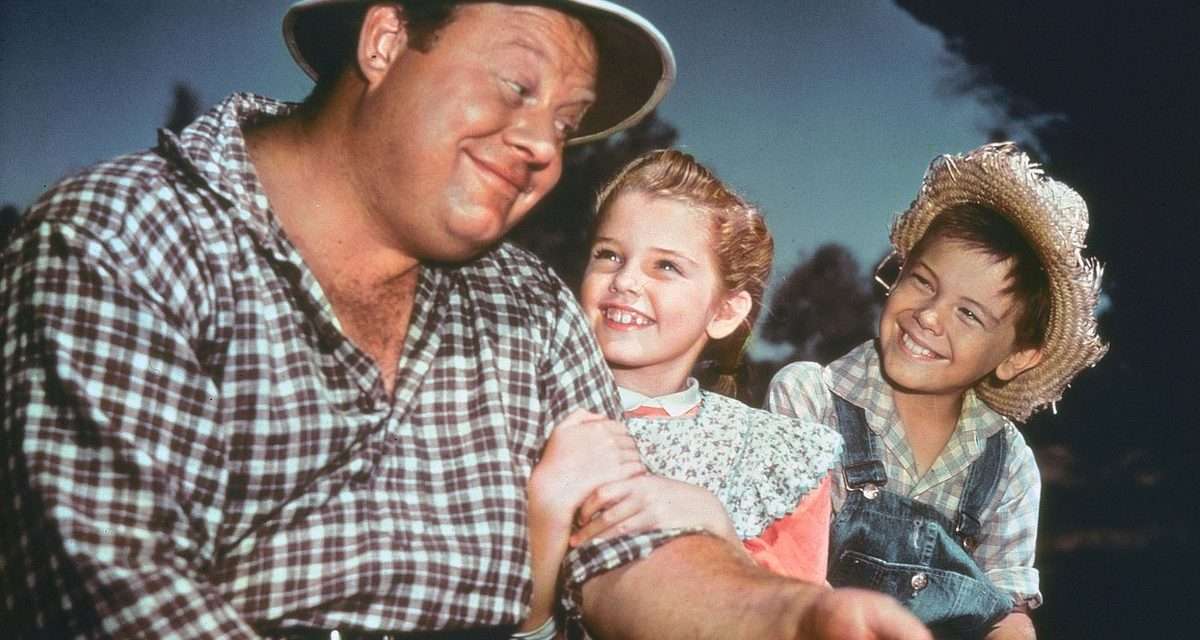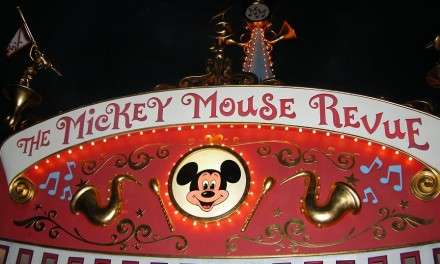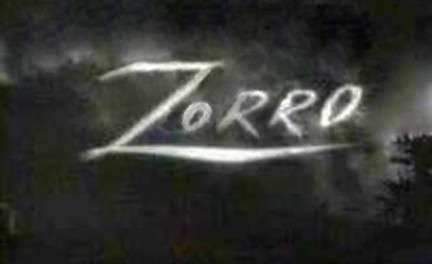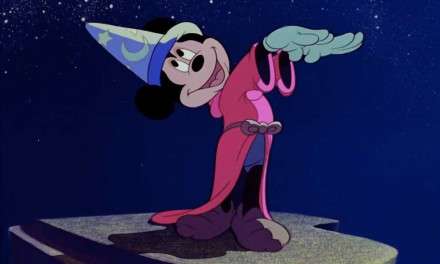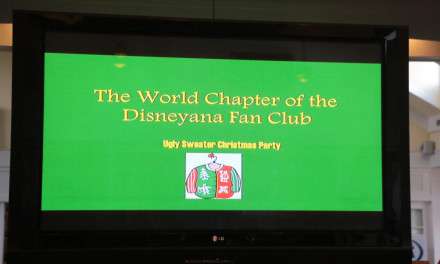Walt Disney had an amazing quiver of talents. Most important of them all was that of a storyteller. From the ground-breaking animated film “Alice’s Wonderland” which started Disney on his animated career, Walt always believed that in order to captivate people, they must be a part of the story. They have to believe they are participants in the drama. This conviction survives today in Walt’s Company. No matter what venue in the parks that guests participate, the story is the common thread that continues to enthrall!
Walt made many live action, animated and combined films. These family-friendly films have mesmerized audiences for years. Most are fondly remembered, and to be sure are classics in themselves. But there are some films that have been forgotten, lost to the dustbin of history. They just did not have the allure of say, Snow White or Mary Poppins. But today I want to discuss a film that is unremarkable in its storyline, i.e. no major conflicts, no enemies or disasters. It is just a simple tale of a boy and his black lamb.
The story begins in 1903. A small boy (Child actor Bobby Driscoll-Who also appeared in Song of the South) named Jeremiah Kincaid dreamed about owning a racehorse after reading and seeing the champion trotter race horse Dan Patch. Dan Patch was undefeated in his career. One day, the train stopped in the fictitious town of Fulton Corners, Indiana, just to let Dan Patch out to stretch his legs. Jeremiah walked up to Dan, petted him and gave the horse his apple and was completely enthralled. Later, a baby lamb born in his barn was rejected by the mother, and he adopts him. He names the black wool lamb Danny, after Dan Patch. He now dreams of entering the lamb in the Pike County Fair, but his strict grandmother, Granny Kincaid (Played by actress Beulah Bondi) is too busy running the farm by herself and wants Jeremiah to do his chores. He only confidant and ally are his Uncle Hiram Douglas, the Town’s Blacksmith. (Played by Burl Ives) and his best friend Tildy, played by his co-star in Song of the South, Luana Patten.
But difficult trials lay ahead of Jeremiah, as the lamb grows up, he is constantly destroying things on the farm and the local mercantile store in town. But in classic Disney movie fashion, Jeremiah earns the money to go to the fair and enter Danny, and the outcome of the film ends in a classic Disney good-feeling way. This live action and animated film was paramount in many ways but has been largely overlooked in comparison with other Disney films. The film was significant to many who worked on it, especially for Walt. It was also the motivation for Walt’s planned Disneylandia and the Future Disneyland. The film was inspired by the Author Sterling North. Sterling wrote a story in 1943 called Midnight and Jeremiah. Walt stated during a shoot for the film… “I knew I had found the perfect story for a new kind of motion picture when I read the book,” In a way, it was the perfect fodder for Walt. The film, released on January 19th, 1949, was a personal snapshot of a bygone era that Walt remembered growing up for four years in Marceline Missouri. In fact, a part of Walt’s childhood in Marceline is represented in the film, the red barn of the Kincaid’s.
Walt began brainstorming with screenwriter Edwin Justus Mayer in 1945 about adapting the book for film. His producer, Perce Pearce traveled to Indiana to get a feeling of the atmosphere for the movie. Pearce did some second unit directing for the film. The first scripts featured no animation. But the distributor, RKO complained that it would be hard to sell a Disney film without any animation. Many thought that Walt was pushed into inserting animation sequences. But his contract with RKO stated… The features he would make for RKO distribution “shall be animated cartoon or maybe a part animated cartoon and part live-action.” There was no provision for just a wholly live-action feature. This may be the reason the first two minutes of the film is animated.
An integral component of the film, in addition to his Uncle and friend Tildy, Jeremiah daydreams (In animation sequences) of the Wise Old Owl in his scrapbook, where he springs to life, encouraging him on during the film. The Wise Old Owl tries to impart on Jeremiah that “It’s what you do with what you got”, which is the moral of the film. This was a philosophy that Walt would agree with and one of the reasons Walt wanted to recapture the nostalgic memories of his youth in this film. Walt stated in an interview… “I saw the cartoon characters as figments of a small boy’s imagination, and I think they were justified,”
For his director, Walt chose Harold Schuster. Schuster director the film My Friend Flicka in 1943; Walt and his family enjoyed the film so much, it was a constant re-run in his home theater. Schuster was under contract to 20th Century Fox and was lent to Walt for the live action scenes. The lamb, according to Schuster was difficult to control, even when enticed with food. It was Schuster who requested Beulah Bondi for the role of Granny. She learned to plow a field, work a loom and take care of sheep. She performed these tasks as she was doing them her whole life. Filming started on April 30th, 1946, and continued on through March 28th, 1947. Principal filming took place in Tulare, Visalia, and Porterville in the San Joaquin Valley about 250 miles north of Hollywood. Also, some scenes were shot in Sequoia National Park. Some filming was completed in May and August 1946. It was stifling hot, many days exceeded 100 degrees. The cast and extras made very uncomfortable in the period costumes. Greens men every night had to water the plants and soil, just to look presentable for the following day. Almost 500 locals were utilized as “extras” in the film and Walt himself personally directed much of the action.
As stated before, the film never attained the following or profit margins of other Disney offerings, but it had a major impact on many involved in its completion, including Walt himself. Architect John Cowles Jr., son of Dr. John Cowles who helps finance Walt’s first animation studio, designed the red barn shown in Kincaid’s farm. This barn reminded Walt of the barn on his farm in Marceline Mo. Cowles designed the same barn for Walt as a workshop for his Carolwood Pacific Railroad (Named after his address, 355 Carolwood Dr.) It was Walt’s favorite place to get away from the stresses of the Studio. Cowles also planned many of the buildings at Walt’s Burbank studio.
Ward Kimball, one of Walt’s nine old men and a rail enthusiast, designed the rail depot in the movie. He based the design on a Lehigh Valley Rail depot in Pottsville N.Y. After the filming, Walt gave it to Ward for his backyard Grizzly Flats steam train layout. He thought Ward would like a train station. Walt’s gift turned out to be sort of a nightmare for Ward. When the studio delivered it to Kimball’s home in San Gabriel, he tried to re-assemble it. It was like a huge jigsaw puzzle, and after finally getting the three walls up (This was a studio set, not meant for permanent use), when he placed the roof on, the structure collapsed. He had to start all over, and never said to Walt the trouble and monies spend to get it up!
The film also gave Disney storyman Bill Peet an opportunity to advance his skills as an illustrator and writer. In 1950 a Golden Story Book released by Simon and Schuster of the film had text by Helen Palmer and was illustrated by Bill Peet. This was the start of his success as a children’s book artist and writer. His first book was called…” Hubert’s Hair-Raising Adventure in 1959. But many consider the Simon and Schuster book his first. (He made a series of 20 books which included two Disney titles- “Mystery in Disneyville” and “Donald Duck and the Hidden Gold”. Because of the film’s lackluster performance, the book was never reprinted.
In addition, Burl Ives who portrayed Uncle Hiram Douglas, known as “America’s favorite Balladeer” had his first hit single “Lavender Blue (Dilly Dilly)”. It was also nominated for an Academy Award for “Best Original Song”.
Perhaps the greatest influence this simple movie had was that of Walt Disney himself. Before Disneyland, Walt had an inspiration he entitled “Disneylandia”. This would be a detailed miniature exhibition he would travel around the country with, hoping people would enjoy the miniature tableaus. Walt became quite adept at constructing amazingly detailed buildings, trains, and other items. His first tableau was that of Granny Kincaid’s cabin from the film. This was an astounding detailed cabin complete with miniatures, i.e. a rocking chair, bible, loom, a flintlock rifle over the miniature fireplace, and even a miniature rug. The fireplace chimney was constructed out of pebbles he collected. Walt stated in a 1953 interview… “This little cabin is part of a project I am working on, and it was exhibited as a test to obtain the public’s reaction to my plans for a complete village,” But Disneylandia never came to fruition. Walt realized that the project would not generate enough income and just a small group could see the exhibit at a time. The project would eventually become Disneyland.
This film recalls a time in America’s past when common sense and family values were the norm. People, much like the theme of the movie “It’s what you do with what you got” made due and worked hard. I have seen this movie a dozen times, and although its story is simple, there is little intrigue or friction, it is a good-feeling tale, and makes you wish that in today’s harried and rushed world, we could go back to the simpler times, sit back and see the forest through the trees.

